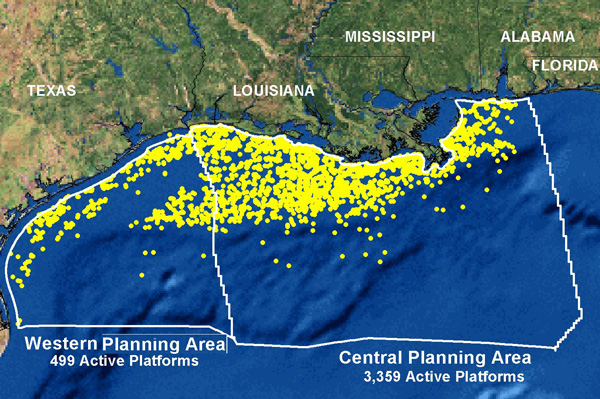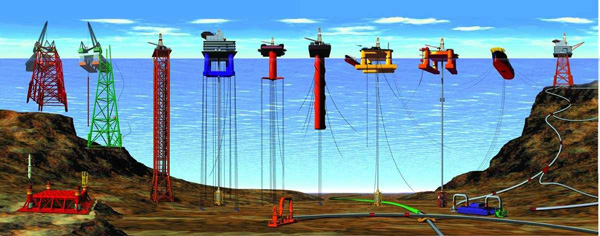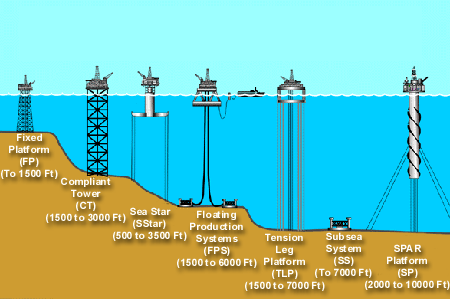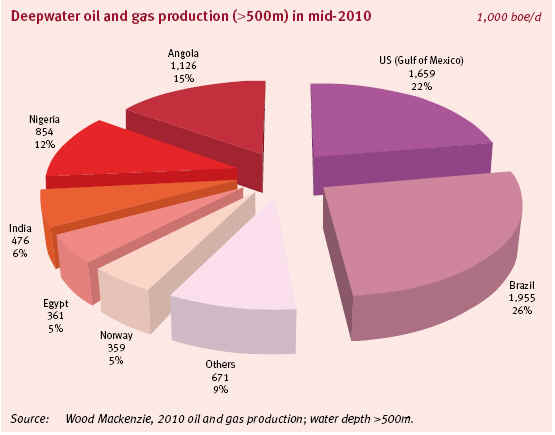
|
||||||||||||
|
|
|
Offshore Drilling Drilling offshore dates back as early as 1869, when one of the first patents was granted to T.F. Rowland for his offshore drilling rig design. This rig was designed to operate in very shallow water, but the anchored four legged tower bears much resemblance to modern offshore rigs. It wasn't until after World War II that the first offshore well, completely out of sight from land, was drilled in the Gulf of Mexico in 1947. Since then, offshore production, particularly in the Gulf of Mexico, has resulted in the discovery and delivery of a great number of large natural gas and oil deposits. There are 3859 active platforms in The Gulf of Mexico .
There are two basic types of offshore drilling rigs: those that can be moved from place to place, allowing for drilling in multiple locations, and those rigs that are permanently placed. Moveable rigs are often used for exploratory purposes because they are much cheaper to use than permanent platforms. Once large deposits of hydrocarbons have been found, a permanent platform is built to allow their extraction.
Types of offshore oil and gas structures include: 1, 2) conventional fixed platforms (deepest: Shell’s Bullwinkle in 1991 at 412 m/1,353 ft GOM); 3) compliant tower (deepest: ChevronTexaco’s Petronius in 1998 at 534 m /1,754 ft GOM); \ 4, 5) vertically moored tension leg and mini-tension leg platform (deepest: ConocoPhillips’ Magnolia in 2004 1,425 m/4,674 ft GOM); 6) Spar (deepest: Dominion’s Devils Tower in 2004, 1,710 m/5,610 ft GOM); 7,8) Semi-submersibles (deepest: Shell’s NaKika in 2003, 1920 m/6,300 ft GOM); 9) Floating production, storage, and offloading facility (deepest: 2005, 1,345 m/4,429 ft Brazil); 10) sub-sea completion and tie-back to host facility (deepest: Shell’s Coulomb tie to NaKika 2004, 2,307 m/ 7,570 ft).
|





